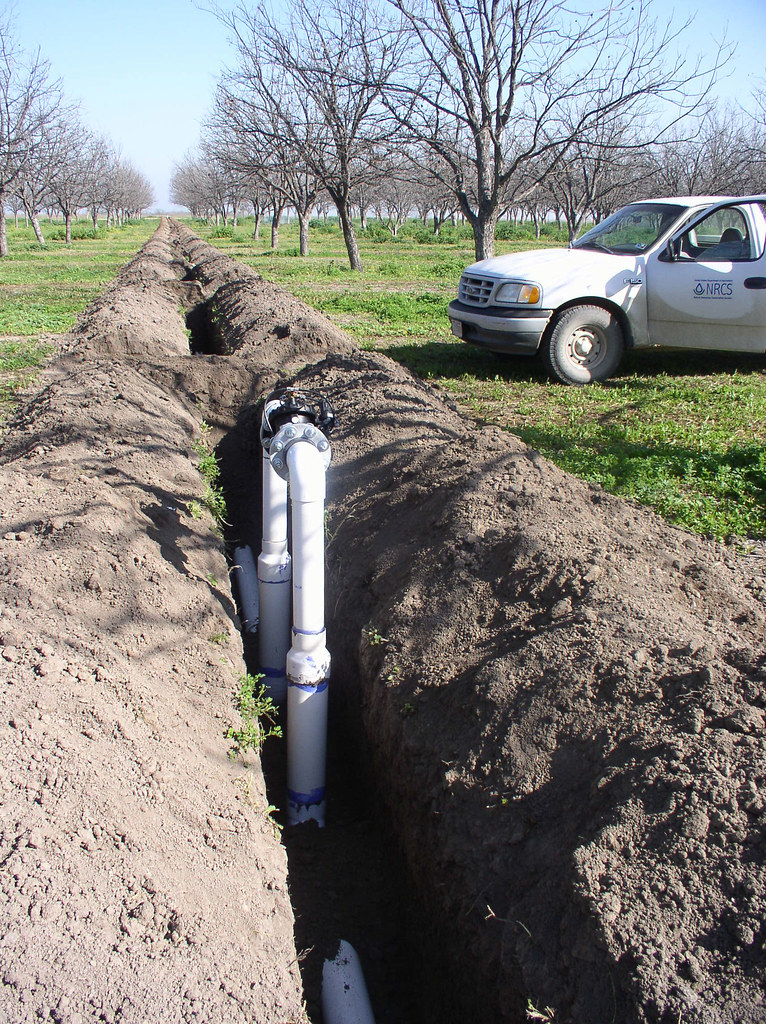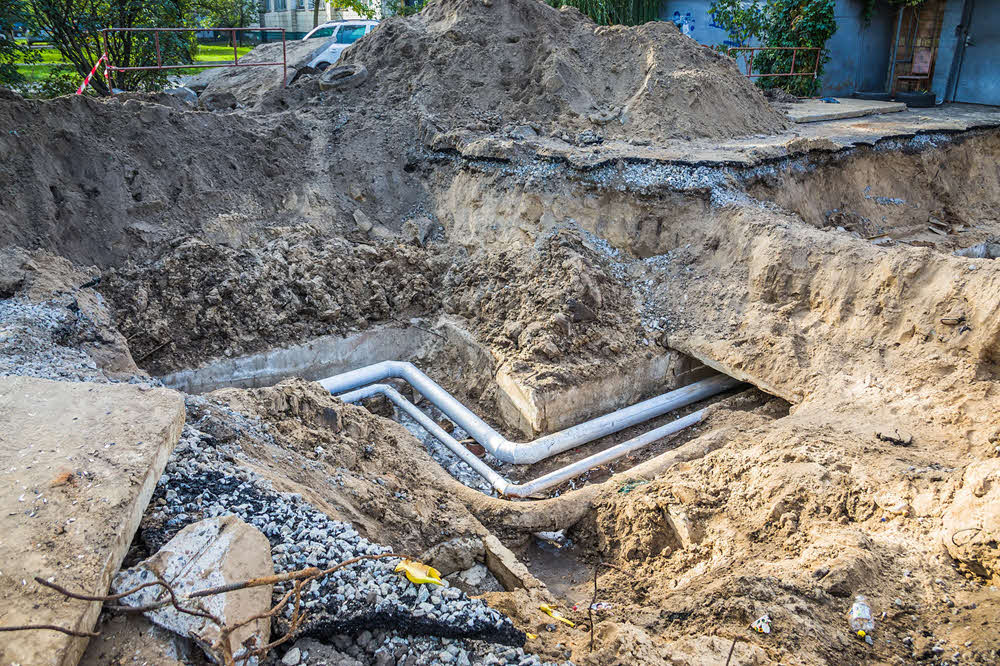Trenching Water Line Servicesin Washington MI
Trenching for Water Lines to Ensure Reliable Water Flow
We Are Locally Owned & Operated For Over 37 Years
Contact Us Today!
We Serve Businesses In And Around The Following Cities:
About Trenching Water Line Services
Understanding the Importance of Trench For Water Line in Commercial Properties
In the bustling commercial quarters of Washington D.C., one aspect of infrastructure maintenance that drastically influences the performance and sustainability of businesses is the effective management of water services. Whether it’s a restaurant that requires a continuous water supply for cooking and cleaning, or an office building needing water for restrooms and HVAC systems, the water service line is of paramount importance. As central as it is, however, not many comprehend the intricacies involved in maintaining or updating this vital system. One crucial aspect to discuss is the trench for water line.
Unveiling the Process: Trench For Water Line
Often lying beneath the surface of commercial property management considerations is the process of trenching for water lines. This undertaking necessitates precise planning and execution. It involves digging a trench along the designated route for installing a water service line from the main water source to the building. After mapping out the line and marking utilities, specialized equipment, often a backhoe or a trenching machine, digs the trench.
An interesting aspect of this process is the depth of the trench, which is typically determined by local building codes and the frost line level. In Washington D.C., for instance, the frost line is 36 inches deep, and the trench will generally be around this measurement. The trench’s depth and width are vital for providing a stable and secure environment for the water main installation.
The Benefits and Practical Applications
Real estate property managers in vibrant D.C. neighborhoods like Georgetown or Capital Hill can testify to the transformative effect of getting a new water line installation right. This upgrade can be beneficial in numerous ways.
Central is the promise of efficient water supply. A properly laid trench for the water line ensures that the installed piping has optimal protection from external damages. It can be running a new water line for a recently constructed building, or replacing an old, lead-based, or damaged line, this effective trenching process can significantly enhance the water supply’s reliability and continuity.
Trenching for water lines also brings about the benefit of potential cost savings. Given the precise nature of this operation, it culminates in a minimal landscape disruption. Instead of having to excavate a larger area, trenching allows for a more targeted approach. This reduced surface disruption indirectly translates to lower restoration costs post-installation.
Harnessing Expertise: The Case of D&J Contracting
These benefits, however, hinge on the quality of craftsmanship and trenching expertise. That’s where reputed contractors like D&J Contracting enter the picture. With an enviable history of delivering high-quality services across the Washington D.C. area, they embody the benchmark of excellence in trench digging for water lines and a wide range of associated utilities.
The professional team at D&J Contracting uphold precise standards in ensuring optimal trench depth, minimal landscape intrusion, and adherence to local coding necessities. With their extensive experience in serving the commercial real estate arena, they understand what makes a successful water main installation and how to avoid potential pitfalls during the process.
The expertise of D&J Contracting poses a compelling case for firms thinking about running a new water line or planning a complete overhaul of their existing water service system. Their industry insights can guide organizations in making informed, strategic decisions about maintaining the indispensable lifeline that is their water supply system.
A Strategic Approach Towards Water Supply Lines
In a nutshell, the process of digging a trench for a water line is a complex yet essential component of maintaining a business’s infrastructure in Washington D.C. While it may seem like a simple digging procedure at first glance, the numerous considerations, such as local coding, landscape disruptions, and future maintenance requirements, make it no less than an art in itself.
Additionally, while it’s a somewhat invisible aspect of infrastructural maintenance, its impact on the performance, sustainability, and even profitability of businesses cannot be understated. Hence, engaging professionals like D&J Contracting – seasoned veterans in this domain, can help businesses streamline this crucial task in the most efficient and cost-effective manner.
Ultimately, a strategic approach to trenching for water lines and installing a solid and reliable water service line is not just about maintaining a constant water supply. It is about ensuring the uninterrupted functioning of everyday business operations, safety for all occupants, and preserving the commercial property’s integrity in the heart of Washington D.C.
Trenching Water Line Services Gallery


Call Us Today to receive your Free Quote for
Trench For Water Line in Washington
Serving: Washington, Michigan

About Washington, Michigan
Washington Township was organized in 1827. It is home to the historic Octagon House, built by Loren Andrus from 1858 to 1860.
Westview Orchards was founded in what is now Washington Township in 1813. The Mount Vernon Cemetery, located at the southeast corner of Mt. Vernon Road and 28 Mile Road, is evidence of a former settlement, named for George Washington’s estate. The village of Mount Vernon once had a post office with William Austin Burt as its first postmaster in 1832.
Washington Township is in northwestern Macomb County and is bordered to the west by Oakland County. The village of Romeo is partially in the northeast part of the township. Ray Township is to the east, Shelby Township is to the south, and Bruce Township is to the north. Washington Township is 28 to 34 miles (45 to 55 km) north of downtown Detroit.
According to the United States Census Bureau, the township has a total area of 36.9 square miles (96 km), of which 35.6 square miles (92 km) are land and 1.3 square miles (3.4 km), or 3.46%, are water.
- Clifton Mills is an unincorporated community near the intersection of 31 Mile Rd. and Mt. Vernon Rd. (42°47′06″N 83°05′10″W / 42.78500°N 83.08611°W ;Elevation: 853 ft./260 m.).
- Mount Vernon is an unincorporated community in the southwest portion of the township at Mt. Vernon and 28 Mile Roads (42°44′31″N 83°05′13″W / 42.74194°N 83.08694°W ;Elevation: 830 ft./253 m.).
- Romeo is a village in the northeast corner of the township. Most of the village is in adjacent Bruce Township.
- Washington is an unincorporated community in the south central portion of the township just west of M-53 at 42°43′28″N 83°02′10″W / 42.72444°N 83.03611°W. Located at the intersection of North 26 Mile Rd. and VanDyke Ave.
As of the census of 2010, there were 25,139 people (up from 19,080 in 2000), 9,258 households, and 7,160 families residing in the township. The population density was 699.2 inhabitants per square mile (270.0/km). There were 9,258 occupied housing units and 612 vacant units. The racial makeup of the township was 94.8% White, 1.6% African American, 0.2% Native American, 1.0% Asian, 0.04% Pacific Islander, 1.0% from other races, and 1.3% from two or more races. Hispanic or Latino people of any race were 3.9% of the population.
There were 9,258 households, out of which 32.9% had children under the age of 18 living with them, 64.9% were married couples living together, 8.9% had a female householder with no husband present, and 22.7% were non-families. 19.2% of all households were made up of individuals, and 7.6% had someone living alone who was 65 years of age or older. The average household size was 2.70 and the average family size was 3.11.
In the township the population was spread out, with 25.0% under the age of 18, 7.3% from 18 to 24, 23.3% from 25 to 44, 30.3% from 45 to 64, and 14.1% who were 65 years of age or older. The median age was 41 years. For every 100 females, there were 97.8 males. For every 100 females age 18 and over, there were 94.7 males.
The median income for a household in the township was $68,841 in 2000 and $83,348 in 2016; the median income for a family was $78,988 in 2000 and $94,057 in 2016. In 2000, males had a median income of $60,721 versus $31,213 for females. The per capita income for the township was $38,657. About 5.7% of families and 7.1% of the population were below the poverty line (up from 2.8% of families and 3.7% of all individuals in 2000), including 9.6% of those under age 18 (up from 5.0% in 2000) and 5.9% of those age 65 or over (up from 2.7% in 2000).
The township has a supervisor-board style government with an elected supervisor, clerk, treasurer and four trustees.
The school districts serving the township residents are Romeo Community Schools, Utica Community Schools, and Rochester Schools from Oakland County.
Call Us Today to receive your Free Quote for
Trench For Water Line in Washington
Related Services in Washington, Michigan
We Serve Businesses In The Following Zip Codes:
48007, 48015, 48021, 48026, 48035, 48036, 48038, 48042, 48043, 48044, 48045, 48046, 48047, 48048, 48050, 48051, 48066, 48071, 48080, 48081, 48082, 48083, 48084, 48085, 48088, 48089, 48090, 48091, 48092, 48093, 48098, 48099, 48225, 48230, 48236, 48310, 48311, 48312, 48313, 48314, 48315, 48316, 48317, 48318, 48397